Royal Icing is my HERO!
I was reading over all of the blogs I have written for ISAC so far, and brainstorming about what I should share with everyone this week. One of my favorites was Fondant- This is your Life. I thought it was fun and informative. While researching that blog, I came across some really interesting facts about the history of rolled fondant that I didn’t know beforehand.
I also really loved all the positive comments shared by you, our readers, about both blog posts concerning Chef Nicholas’ gumpaste recipe and his pre-made commercial gumpaste. I did, however, feel like something was missing. Fondant, gumpaste…. what is missing from the holy trinity of cake decorating?
Hello. My name is Royal Icing.
I would venture that royal icing is perhaps the most versatile cake decorating mediums. Yes, you can cover cakes with it, but you can also cover cookies, make delicate edible flowers, pipe out letters and wording (Chef Nicholas has a whole Craftsy class about that! Click here for 50% off his Custom Lettering and Monogram class!), use it as a glue, build and decorate gingerbread houses (it is the cement of the baking world when it comes to gingerbread houses), color flow designs (remember Julia Cullen’s Winter Nirvana cake?), stenciling designs, brush embroidery, and honestly, have you ever seen royal icing string work? SWOON!
Let’s rewind a bit. Where and when did royal icing come into existence? That is a tricky question. Its origins are shrouded in mystery! Ok, it’s not so dramatic as that. However, unlike my research into rolled fondant, I had a hard time collecting much information about royal icing. This just reinforces my belief that royal icing is an unsung hero. I found two references (and I don’t know how reliable they are) that mentioned when royal icing was created; one claimed it was invented in the 17th century in England, and the second reference notes that in the 18th century a French cook wrote that she spread it over cakes using a board or a feather (ew) and set the cake in front of a great fire to dry. These recipes were very simple and included egg whites, powdered sugar (which at the time had to be laboriously ground by hand with a mortar and pestle), and a liquid- usually lemon juice, water, or rose water. If you have made your own royal icing, you may have noticed that the recipe hasn’t changed much (or at all) over the last 300-400 years. Talk about a tried and true recipe! (Of course, in modern times, you can also make royal icing with meringue powder instead of raw egg whites).
Why would anyone want to change the recipe anyway? Royal icing, though it may be very hard, is pretty perfect for keeping a cake moist. In case you are in any doubt about royal icing’s super powers, let me share this story with you. A humble wedding cake, covered in royal icing, was created in England in the year 1898 (to put that in perspective, Queen Victoria was the ruling monarch). This cake was made by a baker to keep in his display window. When the bakery closed in 1964 (that would be 66 years, two world wars, and 6 British rulers later), the cake was still going strong, so it was moved into storage. Late in life, the baker’s daughter donated the cake to a small museum- she was afraid that someone would find it after she died and assume she had been jilted at the alter (um… that may be my favorite part of the story). The museum did conservation work on the cake, and discovered that the royal icing had actually kept the cake inside moist. THE CAKE WAS STILL MOIST 113 years later!!! Oh, and that’s despite a crack in the icing which was caused by bombings during WWII. Oh, that’s right, I forgot to mention that royal icing is so hardcore it survived a BOMBING. Wow. Just wow. Royal icing sure does take its job seriously. You can read the entire article about the world’s oldest intact cake by clicking here.
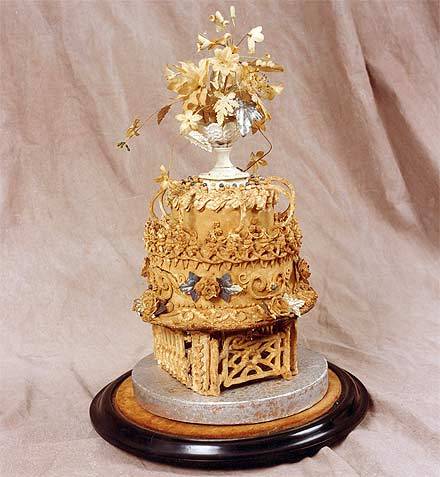
Photo: Hampshire County (UK) Council
We now know that royal icing has been around a while (no jokes after the last paragraph), but do you know why it’s called ROYAL icing? I didn’t have a clue. Luckily, I have access to the internet. While I had trouble finding out WHEN royal icing was invented, it took less than a second to learn how it got it’s name. In the early 19th century, white and refined sugar was very expensive, and only available to the wealthiest of families; only the upper crust could afford cakes with pure white icing. When Queen Victoria bucked the traditional silver wedding dress for a white dress, she also opted for a cake iced in pure white icing. And just like that, the term ROYAL icing was born. Thank you Queen Victoria for having the very first white wedding!
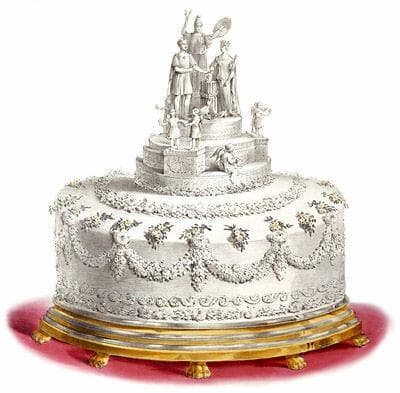
Artist rendering of Queen Victoria’s wedding cake. Don’t be fooled by this image. The cake was about nine feet across.
Speaking of royal weddings, Chef Nicholas created one of the many wedding cakes for Prince Charles and Princess Diana’s wedding. It too was covered in royal icing. In the more recent royal wedding of William and Kate, the cake decorator used the Lambeth Method as part of the design. In fact, a brief web search told me that most of the British Royal wedding cakes for the past few hundred years were covered and decorated with royal icing. Heck, When Queen Elizabeth II got married, she and Prince Philip used his sword to cut through the hard icing! Ha! There isn’t a picture of that. I checked, sorry.
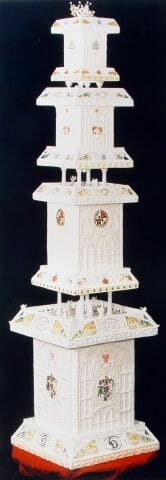
The wedding cake Chef Lodge created for Charles and Diana.
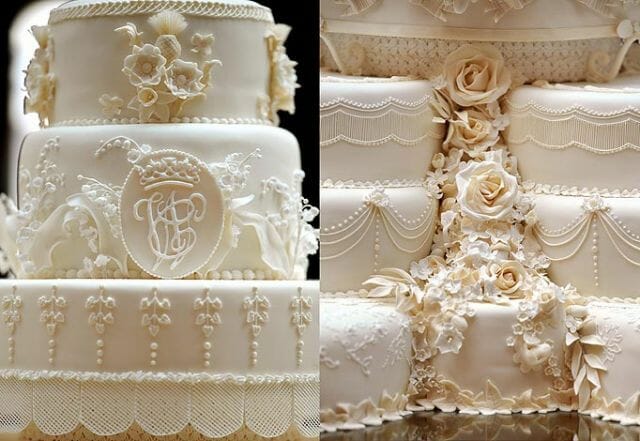
Details of William and Kate’s royal icing decorated wedding cake.
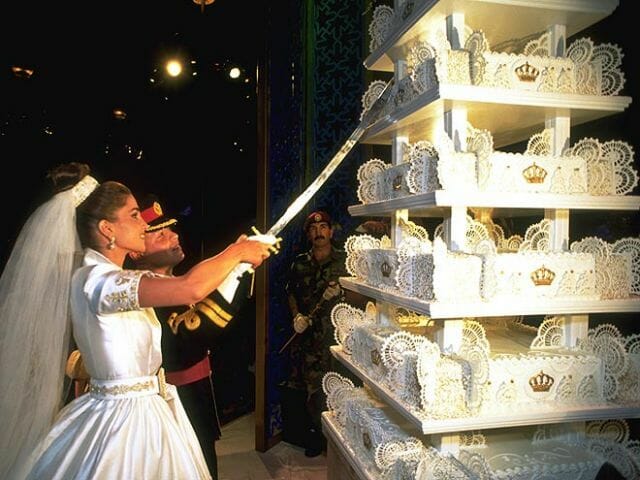
This is the wedding cake of King Abdullah and Queen Rania of Jordan. I don’t know for sure if it is decorated with royal icing (although, it’s a bit hot in Jordan for buttercream. I know I’ve been there), I just had to include a photo of royalty cutting a wedding cake with a sword!
Finally, if you are still questioning how awesome royal icing truly is, I went onto Craftsy, and did a QUICK scan of the cake decorating classes. While a good many do employ royal icing, NINE classes focus on what you can do with royal icing! That’s pretty amazing. Would you like links to each of those classes for a sweet deal? Ok, here ya go!
Lambeth Method with Wendy Kromer
Modern Piping with Joshua John Russell
Contemporary English Overpiping with Ceri DD Griffiths
Mastering Australian Stringwork with Mark Seaman
Vintage Cakes- Modern Methods with Colette Peters (The Cage Cake is amazing)
The Secrets to Perfect Stenciling with Alan Tetreault
Elevating Oriental Stringwork with Toba Garrett
Decorating Essentials: Designer Cookies with Autumn Carpenter (you can take a class with Autumn in person with us in December! Click here to sign up!)
The Wilton Method: Piped Flowers with Beth Somers
Custom Lettering and Monograms with Nicholas Lodge
In conclusion, I believe royal icing is the Clark Kent of the pastry world. Humble, not flashy, hard working. It’s also the Superman- flawless decorations, able to keep cake moist for over 116 years and survive bomb blasts- ensures your cakes are made of steel. Wait, let’s make that as strong as steel, but still tasty. Yep, royal icing may not be as flashy or stylish as fondant or gumpaste, but it sure is a cake superhero!
Sweetly yours,
Stephanie
Don’t just follow our blog! Follow Chef Lodge on Facebook, Instagram, Pinterest, Twitter, Flickr, and Tumblr!
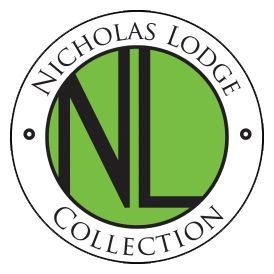
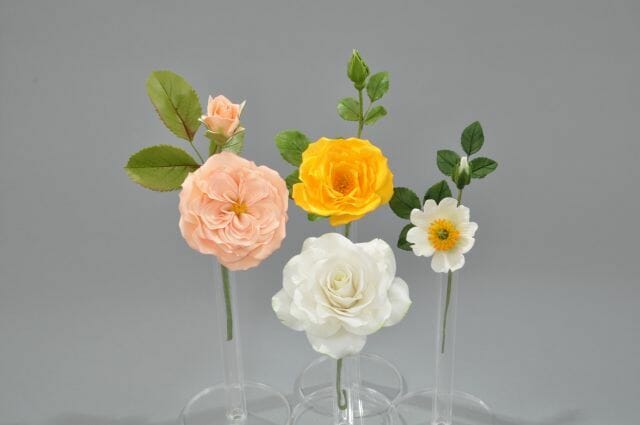
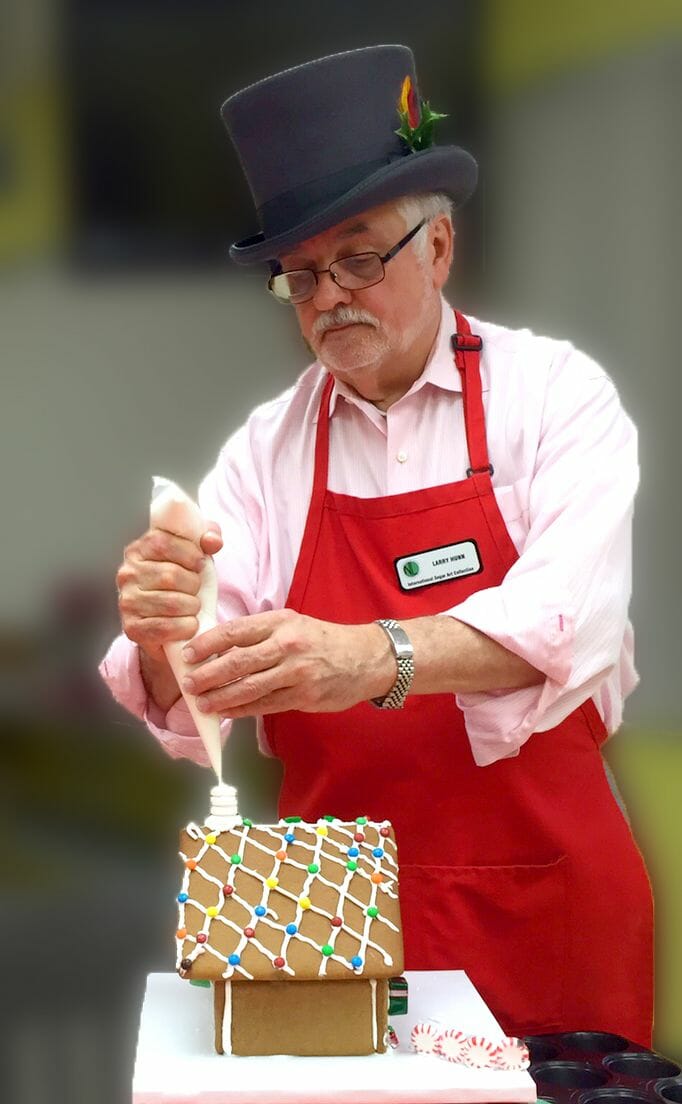
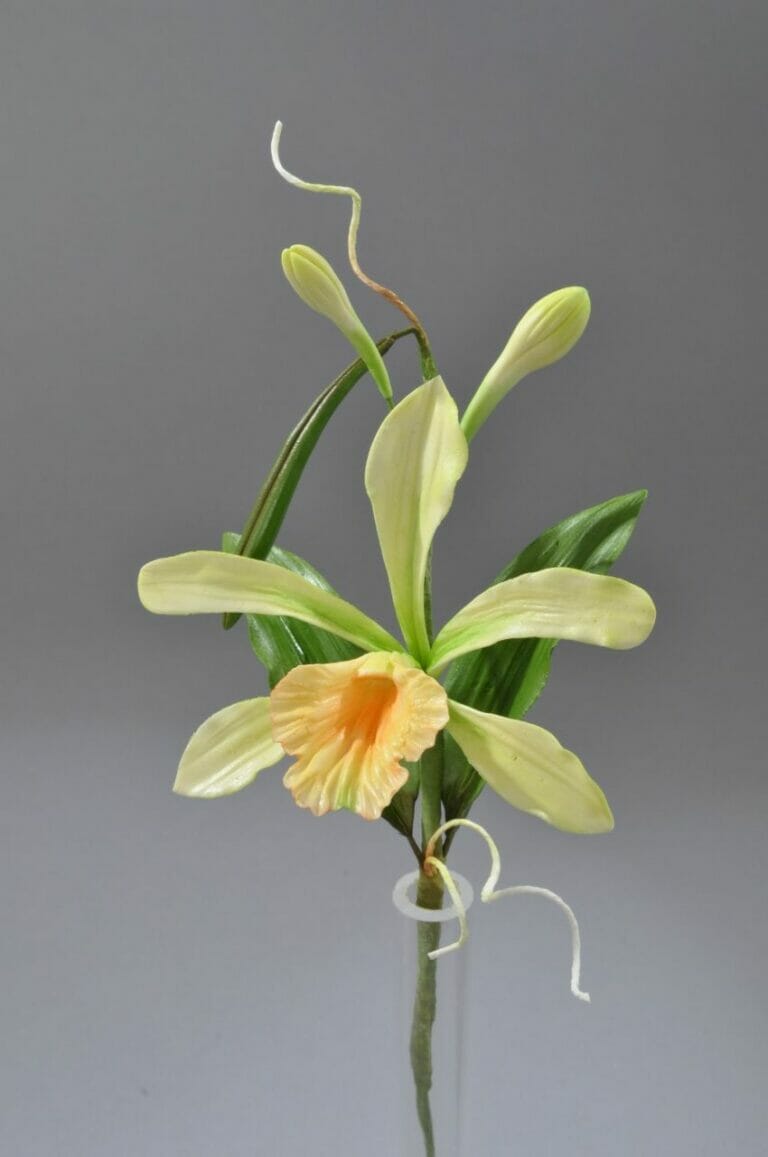

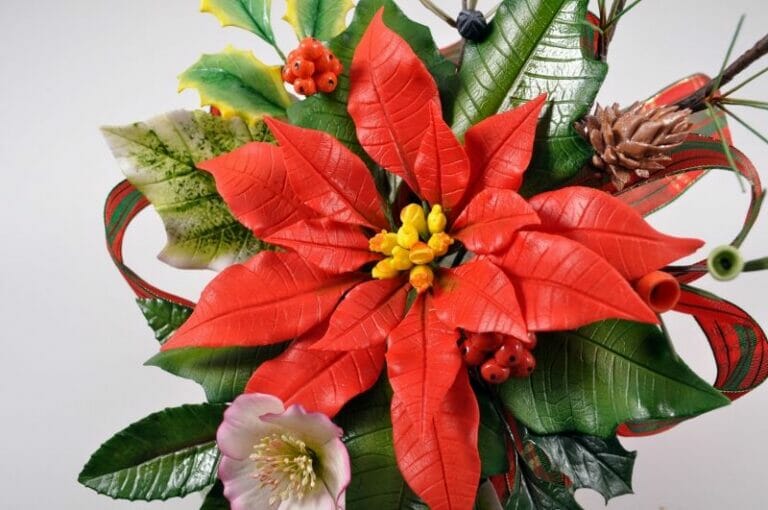

Totally loved this article. I’ve always said it myself “Royal Icing is my ultimate weapon in cake decorating”
Chef Nick,
I am so happy to see the photos and information that you have posted! I am so very happy that you are showing and giving yourself credit for the wonderful things you have done. You are such a wonderful Chef and an amazing Educator and a wonderful friend! Thank you for all the great things I have learned from you about decorating skills!!
Thank you for the article. You don’t list your references, so I am unsure, but in my own research I came across a wonderful resource in Mr. Ivan Day of historicfood.com, who also has a blog, Food History Jottings. He wrote a very detailed essay on the history of confectionery which includes information on fondant and royal icing, which I think any cake decorator would be quite interested in. Thank you again for your insightful articles.
Chef, you are amazing and I love to see your work with Royal Icing………Heck, I love seeing ANY of your work! Attending your classes and Open Houses in Atlanta has truly changed my life and love for decorating cakes. Thank you for sharing your vast knowledge with us! XOX